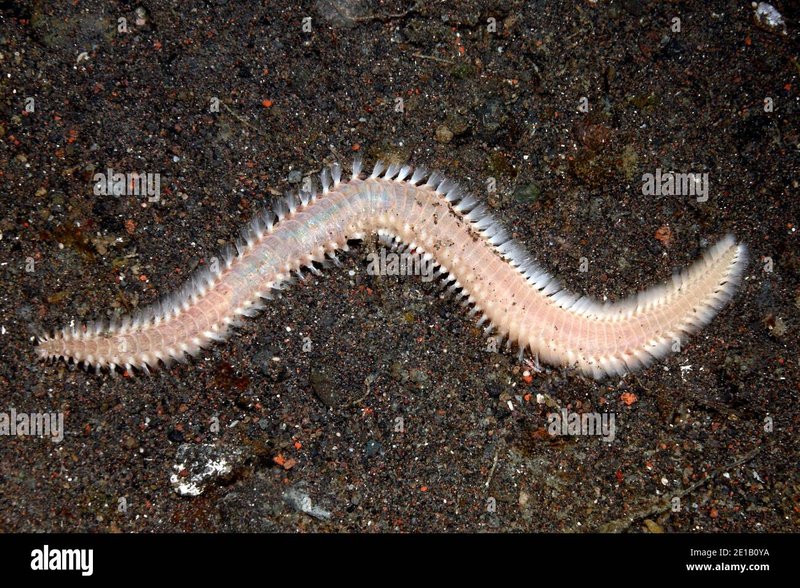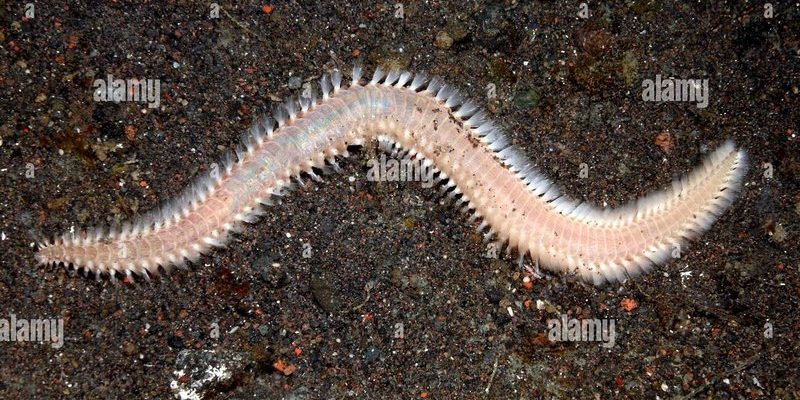
So, let’s dive in and unravel the mystery of these creatures. We’ll look at the maximum size bristle worms can reach, factors influencing their growth, and how to manage them in your home setup. Whether you’re a seasoned aquarist or just getting started, there’s valuable information here for you.
What Are Bristle Worms?
Before we get into the size aspect, let’s clarify what bristle worms really are. These creatures belong to the polychaete family and are typically found in marine environments. They come in various types, with some being helpful scavengers while others can be pests. In home aquariums, you’re most likely to encounter the Eunice aphroditois, known for their long, segmented bodies and, of course, their bristles.
You might be wondering why these worms are even in your tank. Well, bristle worms often hitch a ride on live rock or substrate. They feed on organic material, debris, and algae, which can actually be beneficial for maintaining water quality. However, their rapid reproduction can lead to a significant population explosion. So, knowing their maximum size becomes crucial for effective management.
How Big Can Bristle Worms Actually Get?
In ideal conditions, bristle worms can grow to impressive lengths. The average size usually falls between 4 to 10 inches, but some species can reach a whopping 16 inches or more. That’s about as long as a medium-sized dog! This is why regular maintenance and monitoring are vital in home aquariums.
The size can vary based on factors like food availability and water conditions. When they have access to plenty of nutrients, they can grow much larger. Honestly, if you’re not careful with how much food you’re putting in your tank, these little guys can turn into quite the giants.
Factors Influencing Bristle Worm Growth
Several factors contribute to how big bristle worms can get in your aquarium setup. Here are some of the key ones:
- Food Supply: Bristle worms are omnivorous and feed on organic waste. A high nutrient level can encourage them to grow larger.
- Water Quality: Clean water conditions promote healthy growth. Poor water quality might stunt their size but can also lead to other issues.
- Species Type: Different species have varying growth potentials. Some are simply predisposed to be larger than others.
- Temperature: Warmer waters generally promote faster growth, so keep an eye on your tank’s temperature.
Keeping these factors in mind can help you manage their size and population effectively. Think of your aquarium as a garden; the better the conditions, the bigger the “plants” (or, in this case, worms) can grow.
Managing Bristle Worm Populations
So, how do you keep bristle worm populations in check? It’s not about declaring war on these creatures, as they can provide benefits, but it’s important to manage their numbers. Here are some effective strategies:
1. Regular Maintenance: Regularly remove uneaten food and debris from your tank. This deprives the worms of extra nutrients they might be thriving on.
2. Manual Removal: If you see oversized bristle worms, you can remove them manually. Wear gloves—it’s easy to get stung by their bristles!
3. Introduce Predators: Certain fish or invertebrates, like wrasses or certain types of crabs, feed on bristle worms and can help control their population naturally.
4. Monitor Water Parameters: Keeping your tank’s water quality high reduces their food source. Regular testing and maintenance will go a long way.
By employing these strategies, you can create a balanced ecosystem in your aquarium where bristle worms thrive at acceptable levels.
Are Bristle Worms Safe for Your Aquarium?
This is a common question among aquarium owners. Generally, bristle worms are safe, especially when they stay within reasonable numbers. They help clean up waste and add to the biological diversity of your tank. However, if they grow out of control, they can compete for resources and cause problems.
You might compare them to the weeds in a garden. A few can be helpful, but if they take over, they can overshadow your prized plants. Keeping your population in check ensures your other fish and corals thrive.
Understanding the maximum size that bristle worms can reach in home setups is essential for any aquarium enthusiast. They’re not just random inhabitants; they play a role in your tank’s ecosystem. While they can grow quite large, managing their population is all about striking a balance.
Regular maintenance, mindful feeding, and monitoring water quality help keep these fascinating creatures at bay. Remember, bristle worms can offer benefits when managed properly, so there’s no need to fear them. Just treat your aquarium with the care it deserves, and you’ll have a thriving environment for all its inhabitants.

